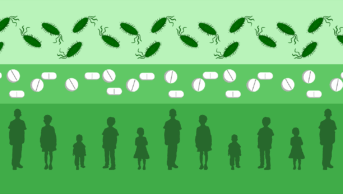
The expansion of non-medical prescribing to a range of healthcare professionals has highlighted the need for interprofessional peer support. I believe it is only when prescribers get together that they can appreciate the breadth of issues that need to be addressed.
There are many common themes where working together can save time and duplication of effort, but there are also issues that affect some groups more than others. For instance, I only recently discovered that requests for prescriptions of botulinum toxin for aesthetic rather than medical indications are an ongoing concern for nurse, podiatry and physiotherapy prescribers.
Ten years ago, the Association for Nurse Prescribing (ANP) was formed to push for full prescribing rights for nurses. Since then, the role of the ANP has evolved to provide nurses with the support and education that they need to feel confident in their roles. Its president, June Crown, will be known to many non-medical prescribers as the author of the 1999 Crown report — which set out an ambitious framework for the prescribing, supply and administration of medicines within and outside the NHS.
Now, the association is expanding to become a multi-professional body called the Association for Prescribers. Each prescribing group has been moving forward separately up to this point. Since March, the revamped association has added representatives from pharmacy, physiotherapy and podiatry to its committee. Radiographers and doctors are being recruited. I am one of five pharmacist committee members; together we represent primary care, hospital and academic pharmacy practice. It is hoped that — with medical representation in the association — we will, in future, see junior doctors joining and using the website and its linked resources to enhance their prescribing skills. This may facilitate a change in the distinctions between medical and non-medical prescribers, or at least a better understanding between these groups.
The Association for Prescribers is working on a new website to reflect its refocused objectives. This will be accessible from a range of devices and provide links to resources relevant to the prescribing practice. The current website (www.anp.org.uk) will redirect to the new one when it goes live. The organisation is also holding its annual conference in London on 6 November 2014. The programme has just been announced: pain management, paediatric prescribing and legal dilemmas will be covered.
Prescribers need to share good practice and discuss professional challenges. I believe this is an exciting development that will enable prescribers to work together to improve the quality of prescribing in all healthcare settings.


